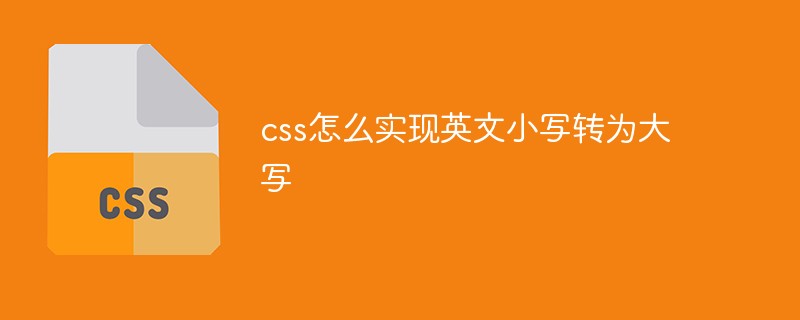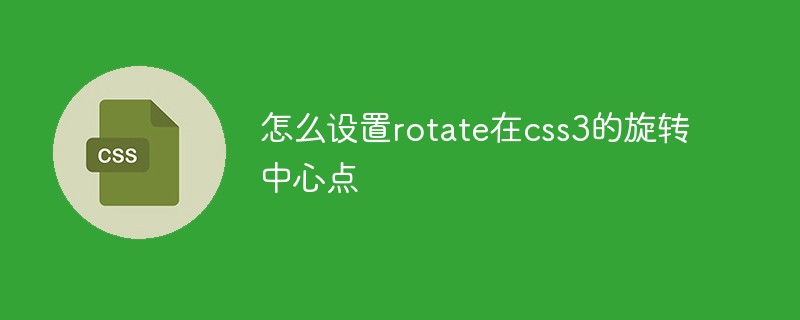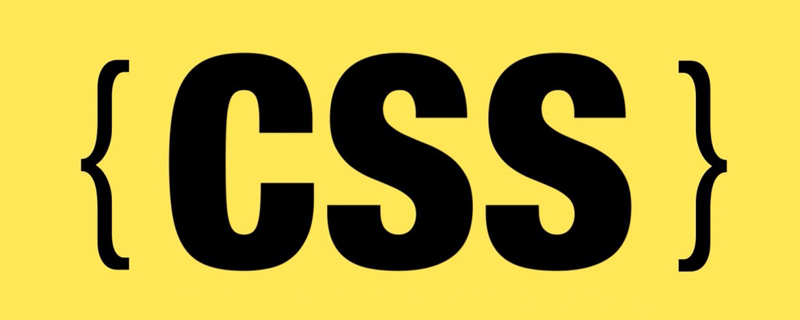In CSSAnimation, using Transition technology is an "implicit" animation method, and correspondingly, there is an "explicit" animation technology, that is, you can use it in CSS Directly specify the animation effect, which requires the use of keyframes properties.
Demonstration: Falling Autumn Leaves Animation
The above CSS animation demonstration of "Autumn Leaves Falling Animation" should be very exciting, fully demonstrating the excellent characteristics of CSS animation.
Let’s introduce step by step how to create keyframes animation, starting with a bouncing box.
Demonstration: Bouncing Box

It is very simple to declare such an animation effect with CSS. First, use @keyframes to describe animation effect rules.
@keyframes bounce {
from {
left: 0px;
}
to {
left: 200px;
}
}
In a @keyframes code block, there is a series of CSS rules, collectively called keyframes. A keyframe defines an animation style at a certain moment in a complete animation. The animation drawing engine will realize the transition between various styles smoothly and smoothly. In the above animation defined as "bounce", there are two keyframes: one is the animation's starting state (the "from" code block) and the ending state (the "to" code block). Once the animation is defined, we can use animation-name to associate it with the animation target element.
p {
animation-name: bounce;
animation-duration: 4s;
animation-iteration-count: 10;
animation-direction: alternate;
}The “bounce” animation is bound to the above CSS rule, and the duration of the animation is set to 4 seconds. It will be executed 10 times in total, with intervals of reverse execution.
Next, we are going to create a more complex animation, involving rotation, background color, transparency and other technologies, which requires the use of multiple keyframes.
@keyframes pulse {
0% {
background-color: red;
opacity: 1.0;
transform: scale(1.0) rotate(0deg);
}
33% {
background-color: blue;
opacity: 0.75;
transform: scale(1.1) rotate(-5deg);
}
67% {
background-color: green;
opacity: 0.5;
transform: scale(1.1) rotate(5deg);
}
100% {
background-color: red;
opacity: 1.0;
transform: scale(1.0) rotate(0deg);
}
}
.pulsedbox {
animation-name: pulse;
animation-duration: 4s;
animation-direction: alternate;
animation-timing-function: ease-in-out;
}
 The Keyframes here use percentages to represent the action scenes at each stage of the animation. The previous "from" and "to" keywords are actually equivalent to "0%" and "100%".
The Keyframes here use percentages to represent the action scenes at each stage of the animation. The previous "from" and "to" keywords are actually equivalent to "0%" and "100%".
The purpose of CSS Keyframes animation is to provide WEB developers with an easier way to create colorful page effects. Most animation effects are expressive in nature and therefore belong to the browser style system. Programmers can create these effect animations by simply declaring styles, completely replacing the previous manual implementation using
JavaScripttechnology. 【Related recommendations】
1.
Free css online video tutorialcss online manual php.cn Dugu Jiujian (2)-css video tutorialThe above is the detailed content of CSS Keyframes Animation Example Tutorial. For more information, please follow other related articles on the PHP Chinese website!
 css ul标签怎么去掉圆点Apr 25, 2022 pm 05:55 PM
css ul标签怎么去掉圆点Apr 25, 2022 pm 05:55 PM在css中,可用list-style-type属性来去掉ul的圆点标记,语法为“ul{list-style-type:none}”;list-style-type属性可设置列表项标记的类型,当值为“none”可不定义标记,也可去除已有标记。
 css与xml的区别是什么Apr 24, 2022 am 11:21 AM
css与xml的区别是什么Apr 24, 2022 am 11:21 AM区别是:css是层叠样式表单,是将样式信息与网页内容分离的一种标记语言,主要用来设计网页的样式,还可以对网页各元素进行格式化;xml是可扩展标记语言,是一种数据存储语言,用于使用简单的标记描述数据,将文档分成许多部件并对这些部件加以标识。
 css3怎么实现鼠标隐藏效果Apr 27, 2022 pm 05:20 PM
css3怎么实现鼠标隐藏效果Apr 27, 2022 pm 05:20 PM在css中,可以利用cursor属性实现鼠标隐藏效果,该属性用于定义鼠标指针放在一个元素边界范围内时所用的光标形状,当属性值设置为none时,就可以实现鼠标隐藏效果,语法为“元素{cursor:none}”。
 rtl在css是什么意思Apr 24, 2022 am 11:07 AM
rtl在css是什么意思Apr 24, 2022 am 11:07 AM在css中,rtl是“right-to-left”的缩写,是从右往左的意思,指的是内联内容从右往左依次排布,是direction属性的一个属性值;该属性规定了文本的方向和书写方向,语法为“元素{direction:rtl}”。
 css怎么设置i不是斜体Apr 20, 2022 am 10:36 AM
css怎么设置i不是斜体Apr 20, 2022 am 10:36 AM在css中,可以利用“font-style”属性设置i元素不是斜体样式,该属性用于指定文本的字体样式,当属性值设置为“normal”时,会显示元素的标准字体样式,语法为“i元素{font-style:normal}”。
 css怎么实现英文小写转为大写Apr 25, 2022 pm 06:35 PM
css怎么实现英文小写转为大写Apr 25, 2022 pm 06:35 PM转换方法:1、给英文元素添加“text-transform: uppercase;”样式,可将所有的英文字母都变成大写;2、给英文元素添加“text-transform:capitalize;”样式,可将英文文本中每个单词的首字母变为大写。
 怎么设置rotate在css3的旋转中心点Apr 24, 2022 am 10:50 AM
怎么设置rotate在css3的旋转中心点Apr 24, 2022 am 10:50 AM在css3中,可以用“transform-origin”属性设置rotate的旋转中心点,该属性可更改转换元素的位置,第一个参数设置x轴的旋转位置,第二个参数设置y轴旋转位置,语法为“transform-origin:x轴位置 y轴位置”。


Hot AI Tools

Undresser.AI Undress
AI-powered app for creating realistic nude photos

AI Clothes Remover
Online AI tool for removing clothes from photos.

Undress AI Tool
Undress images for free

Clothoff.io
AI clothes remover

AI Hentai Generator
Generate AI Hentai for free.

Hot Article

Hot Tools

Zend Studio 13.0.1
Powerful PHP integrated development environment

mPDF
mPDF is a PHP library that can generate PDF files from UTF-8 encoded HTML. The original author, Ian Back, wrote mPDF to output PDF files "on the fly" from his website and handle different languages. It is slower than original scripts like HTML2FPDF and produces larger files when using Unicode fonts, but supports CSS styles etc. and has a lot of enhancements. Supports almost all languages, including RTL (Arabic and Hebrew) and CJK (Chinese, Japanese and Korean). Supports nested block-level elements (such as P, DIV),

Notepad++7.3.1
Easy-to-use and free code editor

ZendStudio 13.5.1 Mac
Powerful PHP integrated development environment

VSCode Windows 64-bit Download
A free and powerful IDE editor launched by Microsoft







